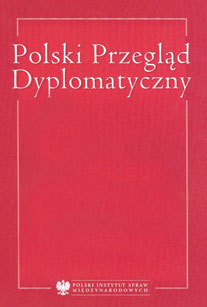

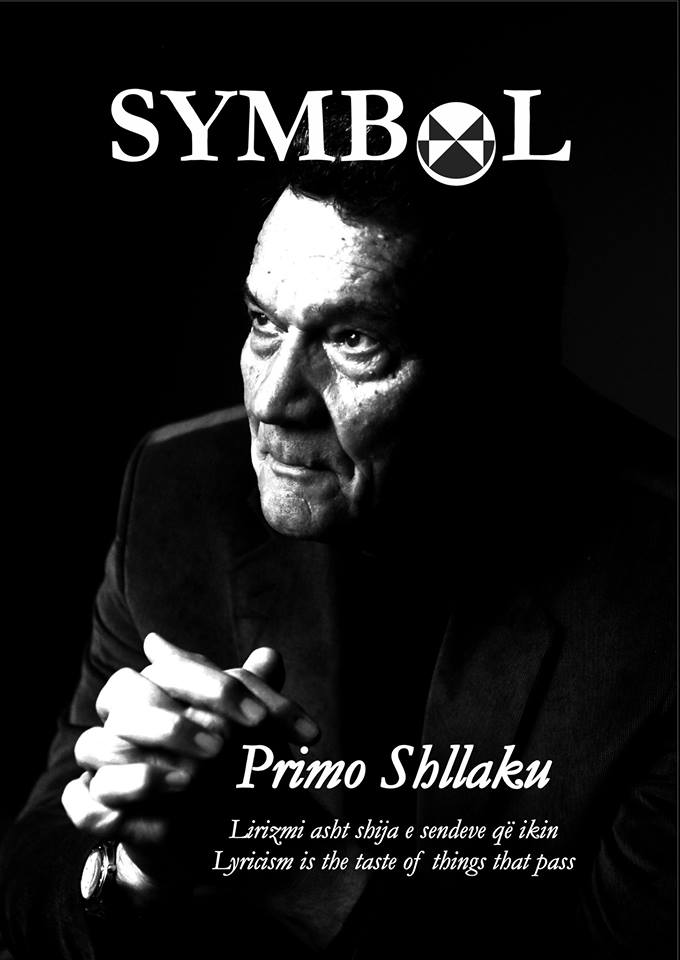
Keywords: Mirror of Nature; Epistemology; Representation; Mind; Edification; Hermeneutics
This paper deals with Richard Rorty’s critique toward Philosophy as Mirror of Nature or foundational philosophy. Rorty’s critiques as it locus has the naivety of the foundational philosophy (Descartes-Locke-Kant, tradition)– the ahistoricity of intelligible truths – the representation of all reality through ‘Mirror of Nature’ (mind) and their consequence in contemporary philosophical debate. Through his sharp articulation, he will diagnose the foundational philosophy giving edification of philosophy as an alternative. As Habermas stated: ‘like the later Wittgenstein, Rorty sees philosophy itself as the sickness whose symptoms it previously and unsuccessfully tried to cure’.
More...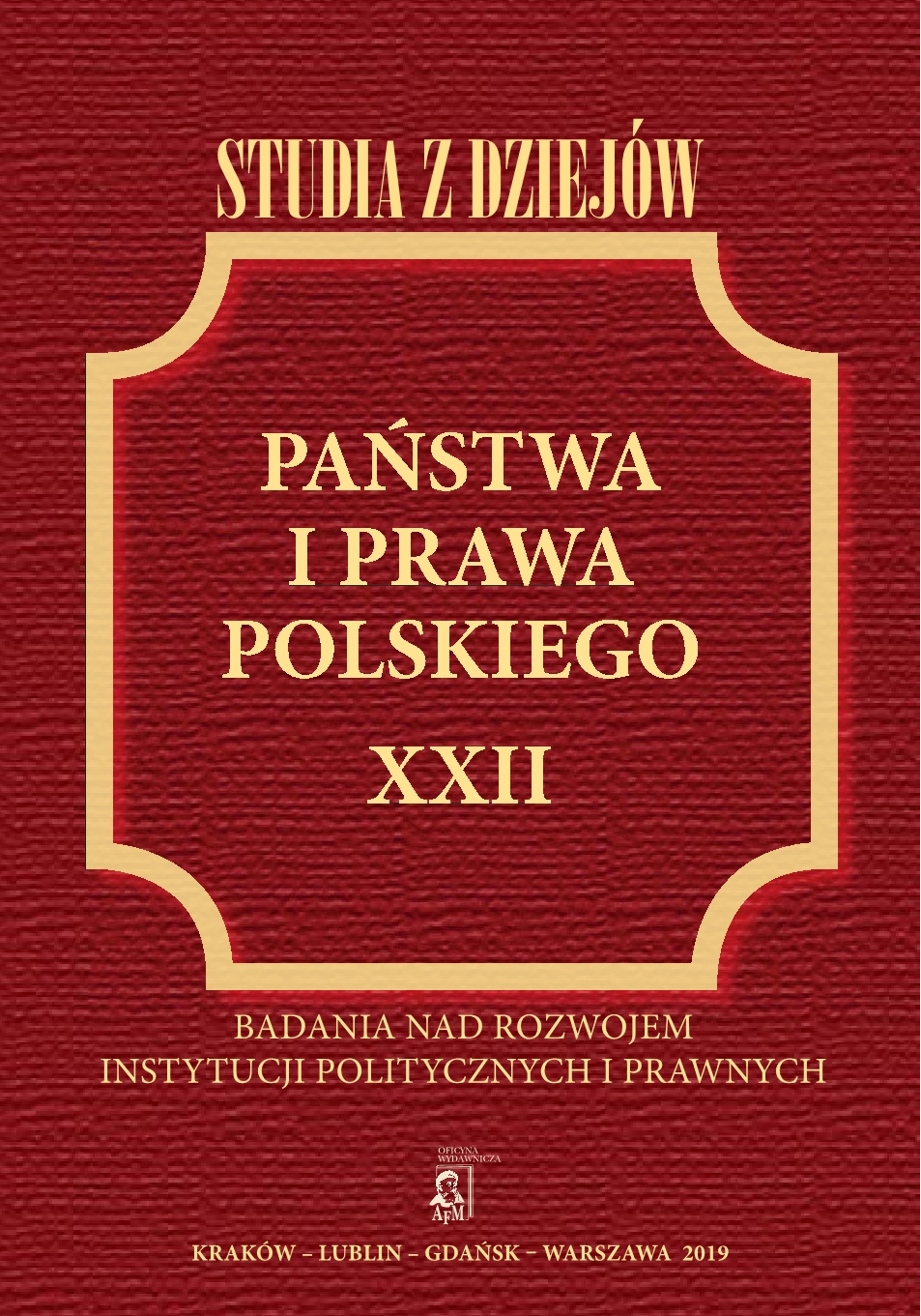
Keywords: law; medicine; Kingdom of Prussia; wanted notice; administrative district (Regierungsbezirk) of Gdańsk; Amtsblatt der Königlischen Regierungs zu Danzig;
Since 1816 in the newly formed administrative district of Gdańsk, the official journal entitled Amtsblatt der Königlichen Regierungs zu Danzig started to be published. One of the issues that periodically appears on the pages of the paper, is the question of crime, especially the wanted notices. Among the descriptions of height, age or body shape of the criminals, there also appears information that could indicate illnesses, defects, traumas and general weaknesses of the defendants. The analysis of nearly a thousand of wanted notices indicates that these kind of descriptions were frequent and could constitute an important help when identifying the fugitive. The mentioned source material helps us to partly illustrate the life of the lower class of society, mainly the criminal underworld. It also constitutes an invaluable resource for historians of medicine, material culture or law.
More...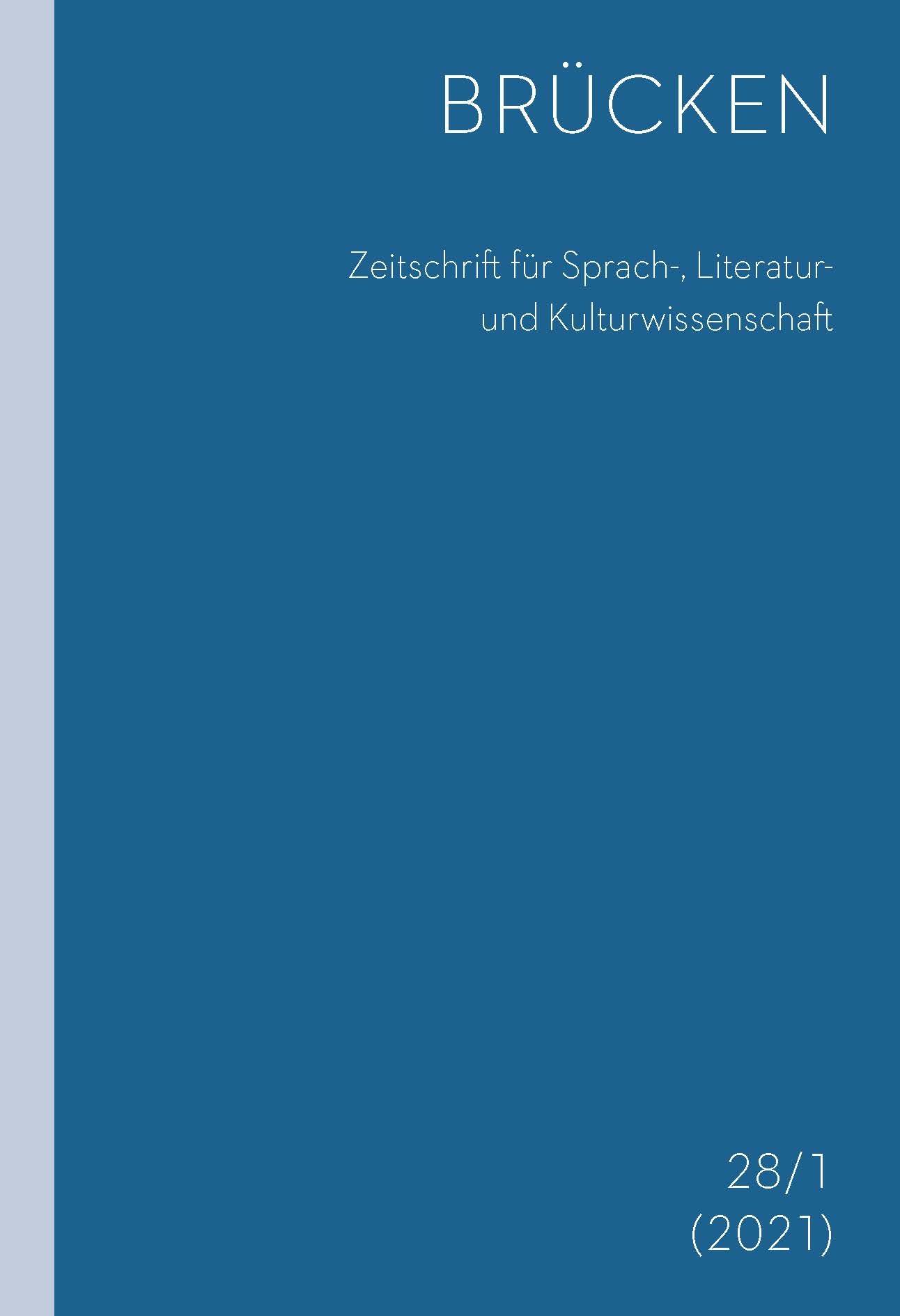
Keywords: Lotman; semiosphere; cultural semiotics; deconstruction; translation theory; literary theory; Czech culture
The paper deals with the relationship between the work of Czech literary scholar Vladimír Macura (1945–1999) and that of Yuri M. Lotman, focusing on the concept of the semiosphere formulated by Lotman in the 1980s. Drawing on both Macura’s published works as well as on his archival legacy, it studies the concept’s role for Macura’s idea of a ‘translational character’ [překladovost] of Czech 19th century literature and culture. At the same time, it shows that Macura went beyond applying Lotman’s concept to his own material but also engaged in an extensive reflection on the history of literary theory thereby revealing parallels with the development of Czech structuralism since the 1960s as well as with Western European and North American deconstruction.
More...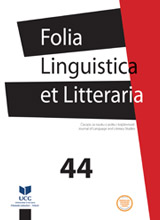
Keywords: critical discourse analysis; marketization; higher education; university prospectuses; promotional discourse
In this paper, we wanted to establish whether the higher education discourse in Croatia has shifted from the practice of self-presenting and foregrounding the quality of universities and positioning them within society, to new discursive practices with language devices used in marketing or advertising industries targeted at prospective students, with a view of persuading them to buy a certain service. As stated in Osman, the role of a university used to be educating and forming knowledgeable people and thinkers who would help change the world. However, this role started to change towards the end of the 20th century, especially in Western countries, as their governments gradually reduced financing for public universities, which forced these institutions to find other sources of income. Therefore, a different approach toward prospective students was required. Marketization as a social phenomenon is defined as a process of societal transformation in which social structures and values act and adapt according to rules of the market, of its principles and of the interest groups who benefit from such constellation (Peračković 983). It was Norman Fairclough (1992; 1993) who noticed and critically analyzed the phenomenon of marketization in the higher education discourse of the United Kingdom, which emerged following the introduction of neoliberal economic measures in the 1980s. Ever since, the institutional discourse has been colonized by a promotional discourse, complemented by visual devices (Fairclough 1993, 156). As a result, this phenomenon has produced a host of hybrid, interdiscursive discourses. University prospectuses have been permeated with instances of promotional discourse, which had already entered the public service order of discourse. The goals may be to attract students, both domestic and foreign, and compete for grants and international projects, which could ensure an inflow of funds. This can eventually result in better positioning in various international ranking lists which measure the quality of universities. There were other authors (Askehave; Lowrie and Willmott; Mautner; Mayr 2008b; Ng; Osman; Teo; Teo and Ren) who noticed similar changes in the order of higher education discourse in their respective countries, which also implemented neoliberal policies. These new approaches to discursive self-presentation bore a striking resemblance to those of companies which enter a market, as higher education institutions started printing more promotional material which replaced informational content. The promotional discourse also “colonized” university websites, which offer various a means of multimodal communication (Zhang; Hoang and Rojas-Lizana; Zhang and O'Halloran). The purpose of our analysis, therefore, was to establish whether Croatian higher education discourse practices shifted toward a higher persuasiveness of utterances in response to changing social circumstances; that is, whether marketization effects are traceable in the institutional order of discourse. Given the increasing number of higher education institutions and the competition between them, we hypothesized that some elements of persuasive discourse must have entered the self-presentation texts aimed at prospective students. Following the examples of the abovementioned authors, as a source of data we used university prospectuses printed over a ten-year period (2004-2015) at the University of Split and studied the diachronic change in the discursive practices of printed materials. In order to analyze the collected data, we applied the instruments of critical discourse analysis, which sees language as a social practice within a social and historical context; therefore, this practice can be fully comprehended only if observed within this context. The main research questions of this paper were as follows: 1) What are the verbal and visual language devices that the higher education institution used in its self-presentation?; 2) To what extent are these devices based on promotional discursive practices, i.e., are we witnessing the marketization of higher education discourse?; 3) What diachronic changes have occurred in discursive practice?; 4) How does the university in question established its relationship with users and gain market value?; and 5) Does the order of traditional higher education discourse change with the influx of new, promotional discursive strategies or not? The starting point was the collected university prospectuses which we scrutinized in search of their common features in textual organization and the semiotic devices used. The meaning is constituted as a synthesis of various semiotic meanings, in this case both verbal and visual, which create a unique pragmatic act with a perlocutionary goal of attracting students to the university. This pragmatic act consists mainly of assertive speech acts used to inform students, but also to persuade them to enroll at the University of Split. We compared and contrasted not only the language devices used in providing candidates with information about the courses and programmes offered, the goals and relations with students, but also the visual devices accompanying the texts. The prospectuses were bimodal, so sometimes verbal and sometimes visual component acted as the most important communication channel with the reader. We looked for the lexical and syntactic elements used with the purpose of informing and persuading prospective students, and these were as follows: noun phrases and adjectives which positively describe the institution; nominalization; direct address (synthetic personalization) through imperatives, personal pronouns such as “we” and T-V distinction; the personalization of the institution (with the exclusive “we”); the use of emotive and evaluative adjectives and adverbs and their superlatives; impersonal and passive forms; deontic modality; verbs which belong to the commercial order of discourse and express or connote orientation toward global trade or markets; and the degree of formality. We also included rhetorical devices such as citing statistical data, external sources, various rankings, detailed descriptions, positive reviews, awards, and support from respected figures or organizations, which were all used as persuasion devices, but also expressions which bring generality and universality. We looked for associative language devices (Perloff), used to add sentimental value, pleasure, impressions of a happy and healthy life, and a sense of belonging to the studies the university offers, as well as other positively marked emotional messages which could affect candidates’ attitudes and their subsequent decisions. Finally, we analyzed the visuals in the prospectuses: the photographs and their content, i.e. the photographed people, objects and the relationship between the photographer and the reader, as well as arrangement of the photographs and the text. Upon reading all the material, it became evident that the prospectuses from 2004 up to 2013 differed only in their information content and the number of pages, so we analyzed the version that was richest in information, the one prepared for the 2012/13 academic year. This prospectus (278 pages) generally used strategies of informing, with only seven instances of promotional discourse in relation to studies at the university. The course descriptions were written in a formal register achieved through impersonal and passive structures, as well as nominalized structures. Modal verbs were rarely used, except in some sentences with expressions of deontic modality, where students’ duties and obligations were listed. The prospectus offered information on a host of courses, but the authors did not overtly try to persuade students into “buying” any service. The 2014/15 prospectus, however, revealed a new identity and the place that universities could take in society: it had a very low information content in its 46 pages, but also seven instances of promotional discourse in the very short course descriptions. These texts consisted of assertive speech acts in which passive and impersonal structures were predominant, but unlike the 2012/13 prospectus, this one contained no instances of deontic modality, which means that no requirements were explicitly imposed on students. The lexis was formal, and so was the representation of the faculties and departments, usually referred to in depersonalized terms as “the Faculty” or “the Department”. However, the instances of promotional discourse contained verbs and nouns which belong to the commercial order of discourse, as well as interdiscursive examples of evaluative and emotive adjectives and their superlatives, of the type usually found in promotional materials and tourist guides. There were instances of external rankings that were supposed to corroborate the subjective statements on the University’s excellence, quality, attractiveness and the interesting nature of their courses. Here, the city of Split was branded as a very desirable tourist destination and sports city. Its tourist activities and the successful sports careers of certain figures were foregrounded, even though these were not closely related to studying at the University. On the other hand, Split was not represented as a centre of science or art with a complex history and rich cultural legacy, there was no mention of successful and renowned scientists or artists, from the past or present time, whose accomplishments could also contribute to creating the public image of the city and its university. Other promotional discourse strategies included the use of indefinite and subjective appraisals of the achievements at some departments and faculties underscoring their uniqueness, which were never further elaborated on, and then orientation toward foreign markets, good job opportunities and professional advancement, but without any specific detail. This prospectus attracts the attention of its readers by adapting the advertising, promotional discourse of the tourist industry in order to “sell” the whole package, the University and the city and all the amenities it offers, new experiences, its pleasant climate, its beaches, and so on. Academic merits are, however, backgrounded. In terms of the visual dimension of the two prospectuses, the 2012/13 had photographs which showed buildings, laboratories and classrooms with students studying, listening to teachers; only very rarely did they direct their gaze toward the camera. The camera just documented certain activities in the manner of a “detached observer”, neutrally and disinterestedly, which corresponds to the ideational function of discourse/semiosis. The photographs did not enhance the informational content and no link between the visual content and the readers was established. Though the number of pages in prospectuses increased over the years, the number of photographs evidently shrank compared to the number of pages. This shows that the verbal component took precedence over the visual component and the derived semiotic meaning suggested that the University of Split in 2012/13 offered opportunities for studying and work, but not much more than that. The approach toward the visual representation changed considerably in the prospectus which followed. Unlike the 2012/13 prospectus photographs, the photographs in the 2014/15 spread over two pages, leaving very little room for course descriptions. The prospectus first introduced the city of Split and situated the University within it. The photographs featured bright colours and supported the text with motifs that are typical of tourist materials: historical monuments, beaches, people strolling around, sitting and enjoying the sun, presenting and selling the way of life with a view of creating an image of a city which is a good place not only for studying, but also for living. The photographs in the section presenting the faculties and departments more often showed students than buildings or other objects, but even in these photographs students rarely established any interaction with the reader, as their gaze was often diverted from the camera. Nevertheless, these photographs were obviously considered more important than the text, since they occupied more space on two adjacent pages, whereas the text was reduced to the lower quarter of a two-page section dedicated to each faculty or department. The University was visually defined as a pleasant place to study and the text ceased to be the main communication channel for transmitting information concerning academic development. In fact, this information was replaced by the general sense of agreeableness emanating from the photographs, which represent the institution, with the text as merely an appendage. This research and its results have demonstrated that, over the years, the University of Split has changed not only the mode of presenting information but also the mode of self-promotion in order to shape its public role and to attract students and, in so doing, increase its financial means. Its academic merits, its roles in setting scientific or artistic standards, or in providing a critique of social, economic or political processes were disregarded or ignored, in favour of a new identity as a service provider packaging education with new life experiences. At both levels, the verbal and the visual, the University was no longer represented as an academic institution which controlled processes and people. The results also showed that it had turned to a more pronounced use of a promotional discourse and the discursive practice of marketing, while simultaneously reducing the informativeness of its prospectuses. However, we cannot say that the University in question was engaged in serious marketization, especially when we compare our study with the results obtained by other researchers, who have elaborated on various significant promotional discursive practices at the universities they studied, some of which even function as enterprises. However, the trend is noticeable. Fairclough’s claim that discourse and society are inextricably intertwined is here confirmed, as social change has been reflected in the semiotic representations of academic institutions. These discourse shifts, which are interdiscursive examples of promotional activities, could impact on the professional role of universities in society and mark the beginning of a more extensive higher education marketization and consequently, of the use of market-oriented discursive practices.
More...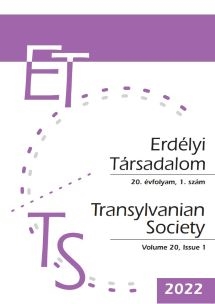
Keywords: abortion ban; controlled fertility; socialist modernization; system integration; Romanian state socialism;
The term “decret child” refers to the exceptionally large cohorts born after the abortion ban of 1966. The paper reviews the demographic antecedents, population policy goals and instruments of the decree, as well as its failure and consequences. Then, in the second part, it traces the social integration of the decree-child generation through formal education to the transition to the world of work. All this is embedded in broad social historical processes such as the change in the social organisation of work during the period of state socialism (the transition from backyard informal work to wage labour embedded in an organisational framework) and the expansion of formal education. The analysis, based on the processing of statistical data and on a second analysis, is essentially a failure story, since the evolution of the collective life of the decree children is also a process of exacerbating the contradictions of the project of economic and social transformation undertaken by state socialism.
More...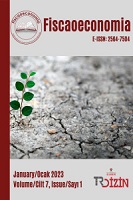
Keywords: World-System Analysis; Modern World-System; Social Science; Modern Structure of Knowledge; Epistemology;
Immanuel Wallerstein criticizing social science which he considers directly related to development and continuation of the modern world-system focuses his critique on the epistemological structure of social science. Wallerstein stands against the structure of modern knowledge of social science which based on epistemological polarization consisting of duality of nomothetic-idiographic and interdisciplinary division, Eurocentrism, instrumental rationality and problematical approach of TimeSpace. Considering the construction of new knowledge as the responsibility of social scientists, Wallerstein tried to develop an alternative approach or overcome the boundaries of social science with world-system analysis. When the epistemological self-reflection of world-systems analysis is made in terms of giving clues about new social science, it is seen that Wallerstein fulfilled a part of this purpose. It is possible to say that Wallerstein used two epistemologies without distinction although he has an asymmetric tendency to the nomothetic and considered social reality in its entirety without breaking up with the boundaries of disciplines. He has coerced Eurocentrism in a manner consistent with his strategy, has tried to move away from the rationality of Enlightenment with substantive rationality -he adopted- and has formed alternative TimeSpace layers. Thus, he tries to pave the way for new knowledge structures and social science. In this context, he makes theoretical and practical contributions to the sociology of social sciences. However, the importance -he attached to the size of structural TimeSpace and addressing the modern world-system with a determinist approach eliminates of the purpose of the analysis.
More...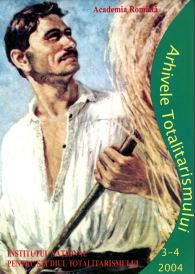
Keywords: Newspeak; historical research; totalitarian systems;
The paper deals with the issue of the utility of the framework generically named “Newspeak” („Limba de lemn”). The first part refuted some fundamental propositions of the “Newspeak” theory as a theory of communication in the totalitarian states: “Newspeak” distorts reality and promotes the lie, “Newspeak” is a language which communicates nothing and it is through “Newspeak” that those in power consciously manipulate „the masses”. Following Patrick Seriot, the term of discourse is proposed instead that of “Newspeak”. The second part of the paper deals with the relationship between the “Newspeak” theory and the traditional theories of historical research (especially the Positivist tradition), underlining some reasons for which the “Newspeak” theory is widely accepted by the historians of totalitarianism and refuting these reasons along the same lines as those used in the first part. At the same time, the paper emphasizes the potential benefits of the „new” historical research (post-Linguistic Turn) for the research of totalitarian/authoritarian systems.
More...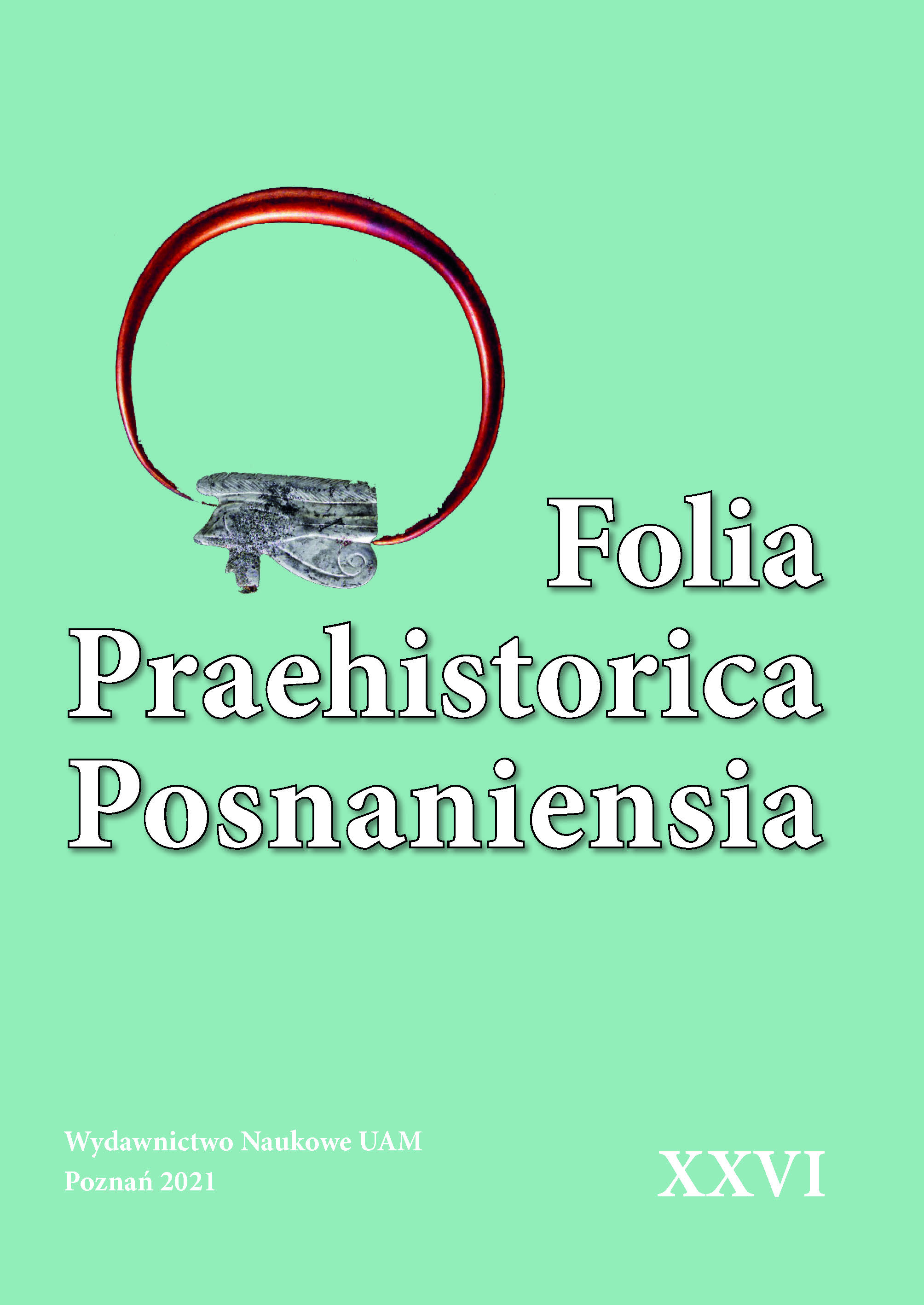
Keywords: methodology and theory of archeology at the University of Adam Mickiewicz in Poznań; modernism and postmodernism in archeology; the methodology of Jan Żak
January 4, 2020 was the 30th anniversary of the death of Professor Jan Żak, who died prematurely at the age of 67. His work and scientific activities were known and appreciated in various countries and during difficult times when he was professionally involved in archeology. The biography of Professor Jan Żak resulted largely from the spirit of the times in which he lived, but also from his open, curious personality. He touched the warfare, and his professional life took place in the realities of the People's Republic of Poland; he also witnessed its dramatic end. The aim of this article is not only to recall the methodological and theoretical foundations of J. Żak's scientific work, but also to try to answer the question about the contemporary methodology of archeology, practiced by the Professor's students and subsequent generations.
More...Keywords: People's Front of Estonia; Reindependence of the Republic of Estonia; perestroika; Self-sufficient Estonia (IME); History of Estonian political thought;
The purpose of the article is to reconstruct the historical meaning of the programmatic documents that laid the foundation for the creation of the People's Front of Estonia. The focus of the analysis is two documents published on April 30, 1988 in the newspaper Edasi under the joint title "Citizens' initiative in support of the reform course": the People's Front Declaration and the People's Front Project. The broader request of the article is to specify the role of the People's Front in the development of the policies that led to the restoration of the independence of the Republic of Estonia.
More...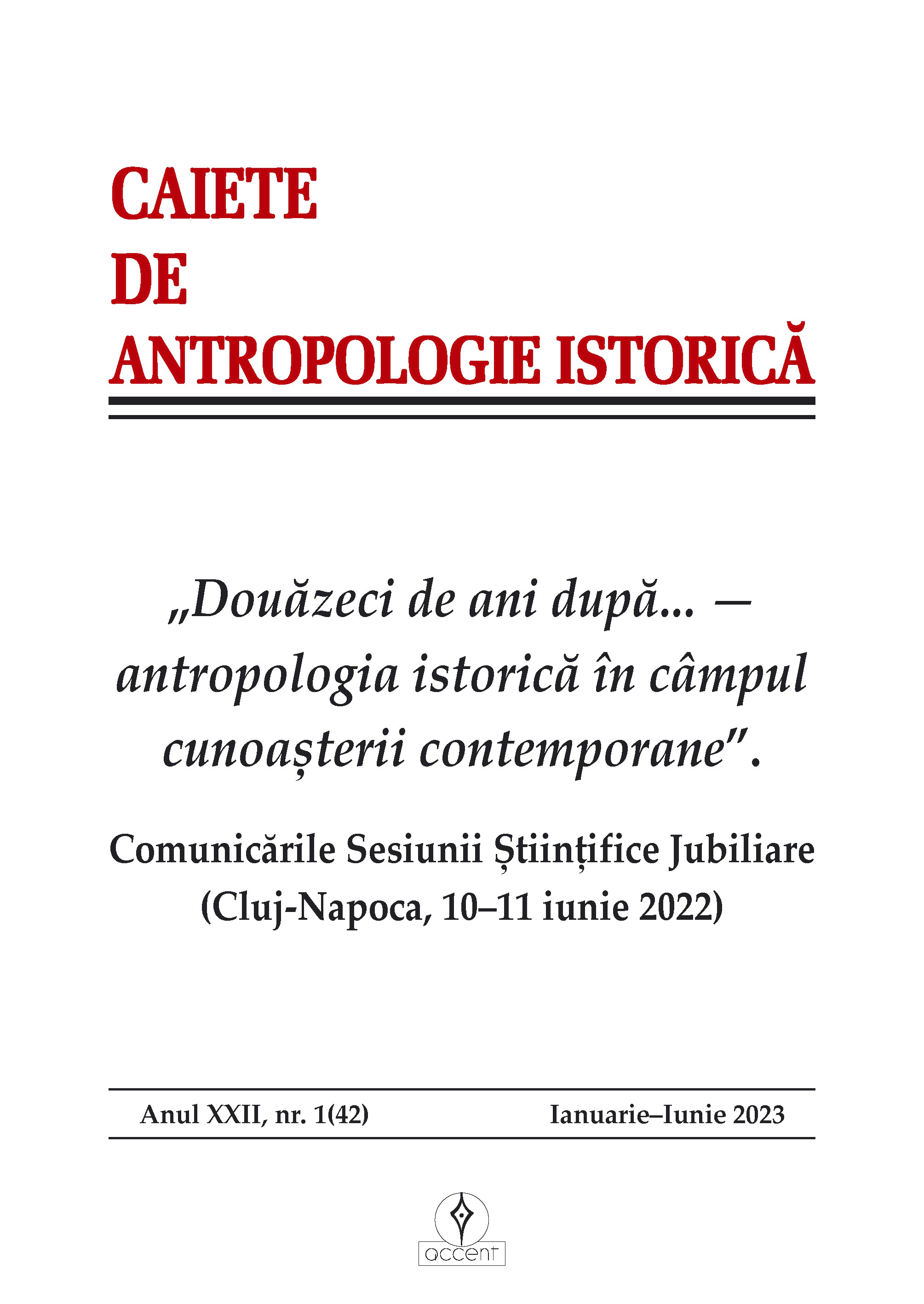
Keywords: “ego-histories”; “linguistic turn”; subjectivity;
Born in 1987, following a well-known book, conceived by Pierre Nora (“Essais d’ego-histoire”), and in an intellectual context marked by the “inversion of the subject” and the “linguistic turn”, specific to the 80s–90s of the 20th century, the historiographic genre of the same name (“ego history”) is currently experiencing an impressive vogue. Until now, several dozen volumes have appeared, in which historians make their autobiographies and narrate, with more or less talent, their intellectual and academic journey. The most recent ones are those gathered by Patrick Boucheron in the “Itinéraires” collection, founded in 2011 at Éditions de la Sorbonne. A brief comparison of the contributions collected by Pierre Nora in the book published in 1987 (thanks to prominent French historians at the time, such as: Maurice Agulhon, Pierre Chaunu, Georges Duby, Raoul Girardet, Jacques Le Goff, Michelle Perro and René Rémond) and the more recent “ego-histories” highlights some major differences and a similarity. The differences come from the fact that the 1987 studies repudiate the intimate side of gender and are more inclined (in a very limited way) to a theoretical reflection on the relationship between narrative subjectivity and analytical objectivity as assumptions of their approach. From this point of view, the contributions of the seven historians are clearly superior to the more recent “ego-histories”, whose authors are very honest (even indiscreet) about their private lives, without showing the same theoretical reflexivity as their predecessors (poorly represented). But both the old “ego-histories” and the new “ego-histories” have one thing in common: their poverty as biographies of a more general purpose. Perhaps more illustrative than individual documents, they are incapable of conveying life experiences that have a more general meaning and are capable of elevating the biographies they tell to the level of models for all (or at least a few) who read them. This is essentially due to the almost complete lack of connection, of all these autobiographies, with the social, cultural and political context in which their authors lived and were formed. A deeper understanding of their historical time would have transformed these personal accounts into real documents, illustrative not only of the biographies of their authors, but, through them, of an entire era. Future “ego-historians”, to fully deserve their name, should take this necessity into account. This is the proposal of the author of this article.
More...
Keywords: disciplining; Transylvania; interwar period; penitentiary system; legislation; punishment;
This study focuses on the disciplinary process in interwar prisons, presenting both the international and Romanian cases, more specifically, the Transylvanian space. The prisoners of Transylvania were subjected to an ample process of education that was often criticized. First, we contextualize the idea of prison and the historical and legislative evolution of the penitentiary system. Secondly, despite the Great Union of 1918, prison conditions and other sectors of social life changed at a different pace from what someone might expect. This stagnation was present in the justice sector, so the disciplining process and the prison life presented significant differences from one province to another. Under these circumstances, our attention is drawn to the implementation of the disciplining process and to the evolution of the punishing methods and their effects on the prisoners. In addition to that, we are interested in the actual prison life and in establishing if a human and behavioral metamorphosis could be truly acquired.
More...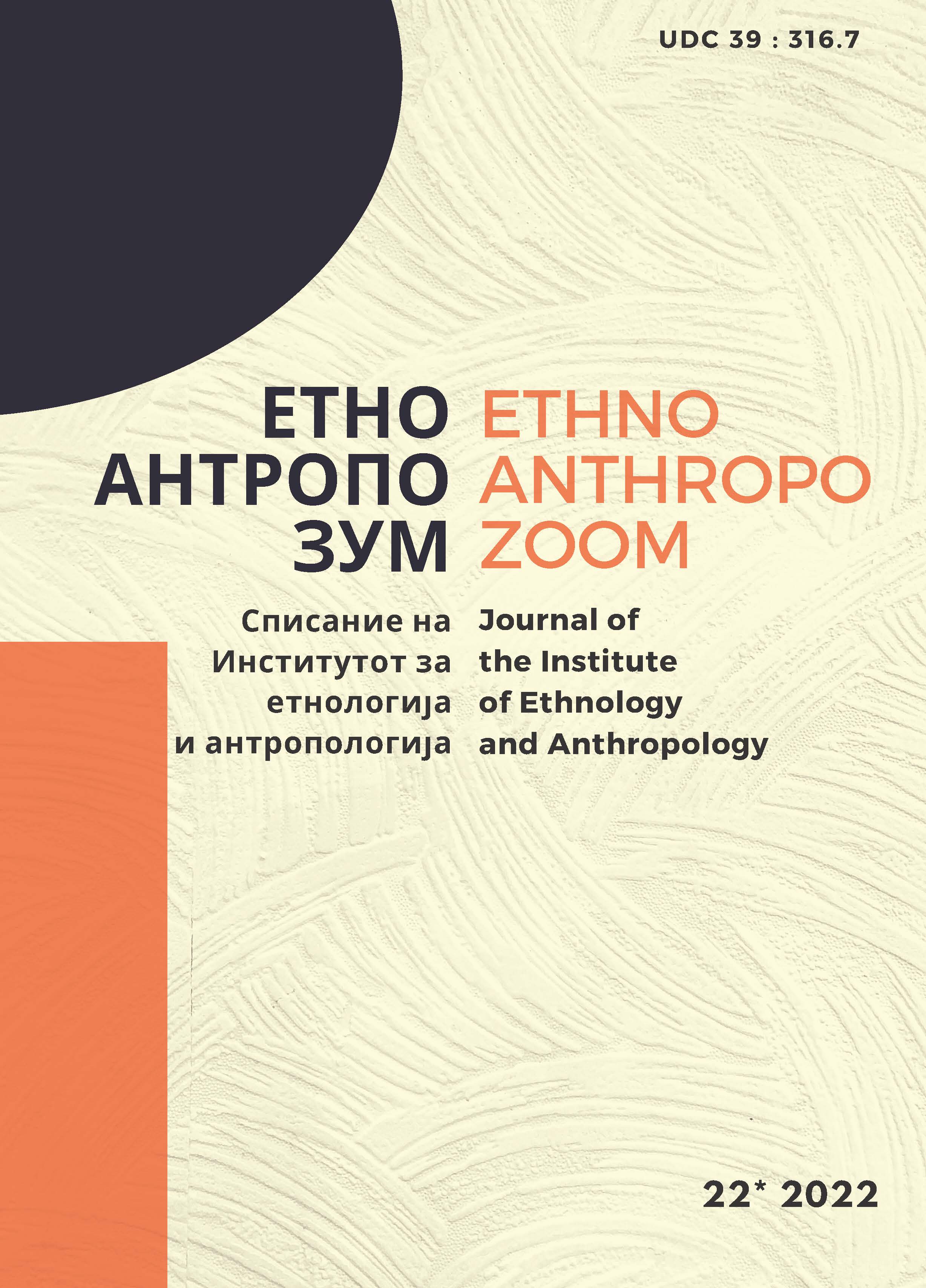
Keywords: движење „гези парк“; Турција; спонтан развоj; јавен простор
Тематиката на овој текст е движењето „гези парк“, кое се случи во летото 2013 г. во Турција. Започнувајќи во форма на мирни протести со цел да се прекине уривањето на Гези парк за потребите на проектот за претворање на Таксим во пешачка зона, набргу движењето стана едно од најголемите социјални движења во турската историја. Жители од сите возрасти, класи и општествени групи се соединија за поддршка откако владините обиди да се задуши протестот со употреба на брутална полициска сила предизвикаа многубројни критики. Покрај тоа што движењето не доведе до драстична политичка промена, сепак остави трага врз турската јавност, особено поради огромната солидарност и општествена кохезија од страна на учесниците. Според тоа, може да се каже дека движењето гези парк претставува еден вид „спонтан развој“, неформален процес низ кој жителите на Турција ја преосмислија турската јавност и можностите за форми на живот во државата. Од огромна важност во овој процес е долгорочната поделба во турската јавност помеѓу секуларните, кемалистичките „модернисти“ и исламските, наречени уште и ердогански „конзервативци“. Може да се каже дека во контекст на репресивната и стишувачка држава, како во минатото така и во сегашноста, жителите на Турција создадоа заедница Гези како директна опозиција, во која општествените хиерархии беа тргнати, а слободата на изразување беше издигната како една од највисоките вредности. Неформалниот начин на организација и одржување на општествената стабилност може да се гледа низ призмата на „неформален развој“, кој директно влијае врз замислите и дејствијата на луѓето, како и на потенцијален извор на знаење за развојот како дел од формалниот сектор. Во оваа смисла, може да се употреби пристапот „развој како слобода“ на Амартија Сен за да се објасни како слободата на изразување имаше клучна улога во конструкциите на овие замисли. На крајот, етнографските истражувања и антрополошките студии можат да бидат корисни во применувањето на знаења од неформалниот сектор во формални развојни стратегии.
More...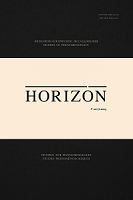
Keywords: structure; group of transformation; relativity; coordinate system; intersubjectivity; space and time; body;
By going back to the starting point of Derrida’s debates with some of the main representatives of structuralism in France, I propose to highlight the ambiguities that cover the very notion of structure, and to take the measure of the exact role that the reference to phenomenology plays then and will continue to play thereafter. Among these ambiguities: the one that touches the mathematical notion of structure, central in the triumphant structuralist mathematical current in France at that time; and especially: the one called “groups of transformations,” the most important one to understand at the same time the audacities and the impasses of structuralism. The hard core of mathematization of modern physics, with Galileo’s principle of relativity, then developed in a masterly way in Einstein’s theory of relativity rest on this very structure. After tracing the broad outlines of these initial discussions, we engage in an analysis of how it is possible to understand the “epistemological contemporaneity” of relativity theory and Husserl’s transcendental aesthetics. Based on a thorough exploration of the analyses of the intersubjective constitution of space, time and the objective common world, we identify this central structure that Husserl calls “intersubjective group of transformation.” Equipped with this phenomenological structure, we trace this motif in Derrida’s work. Its insistence allows us to understand how the phenomenological premises of his critique of structuralism can help to understand his theoretical positions, especially in contrast to Jean-Luc Nancy.
More...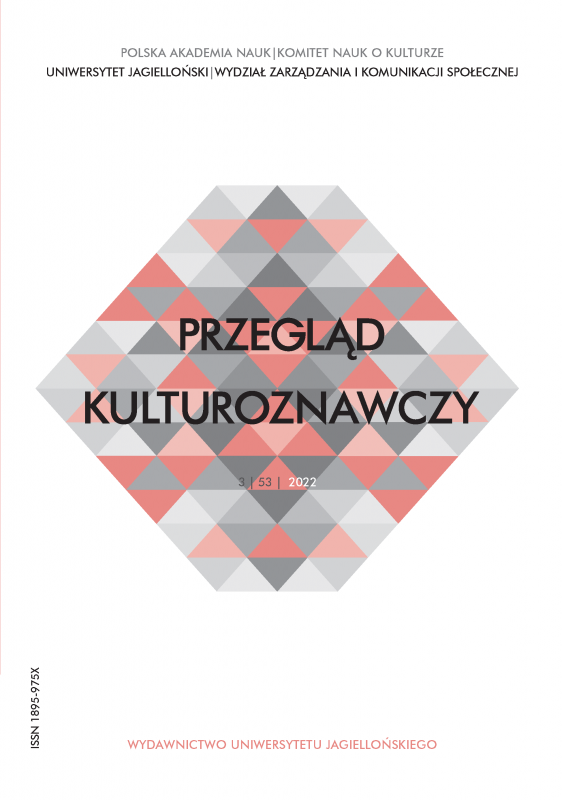
Keywords: Jacques Derrida; photography; writing of light; sciagraphy; still
The article presents Jacques Derrida’s reflections on photography. Although the philosopher himself declared his “lack of competence” in matters concerning visual arts and, more broadly, the image because his domain was word/text, he often spoke/wrote about the nature of the image, including the photographic one, as he was often provoked/invited to make such statements. Derrida did not create a coherent theory of the photographic image and it was never his ambition. However, scattered in several texts, his original reflections on the essence of photography – not in the commonly accepted thinking about this medium as the phenomenon of “writing of light,” but rather a medium that uses a kind of “writing of shade” (or sciagraphy) – force us to reflect and think critically. This article presents analyses and interpretations of Derrida’s texts in which the problem of photography is merely a context for broader philosophical considerations (The Postcard, Memoirs of the Blind, Aletheia, Rights of Inspection), as well as those in which photography becomes the basic material of reflection (The Deaths of Roland Barthes, Copy, Archive, Signature, Athens, Still Remains). Derrida’s thinking (even in darkness) turns out to be worth considering as reading his “amateur” texts on photography proves that his voice can be inspiring in this field as well.
More...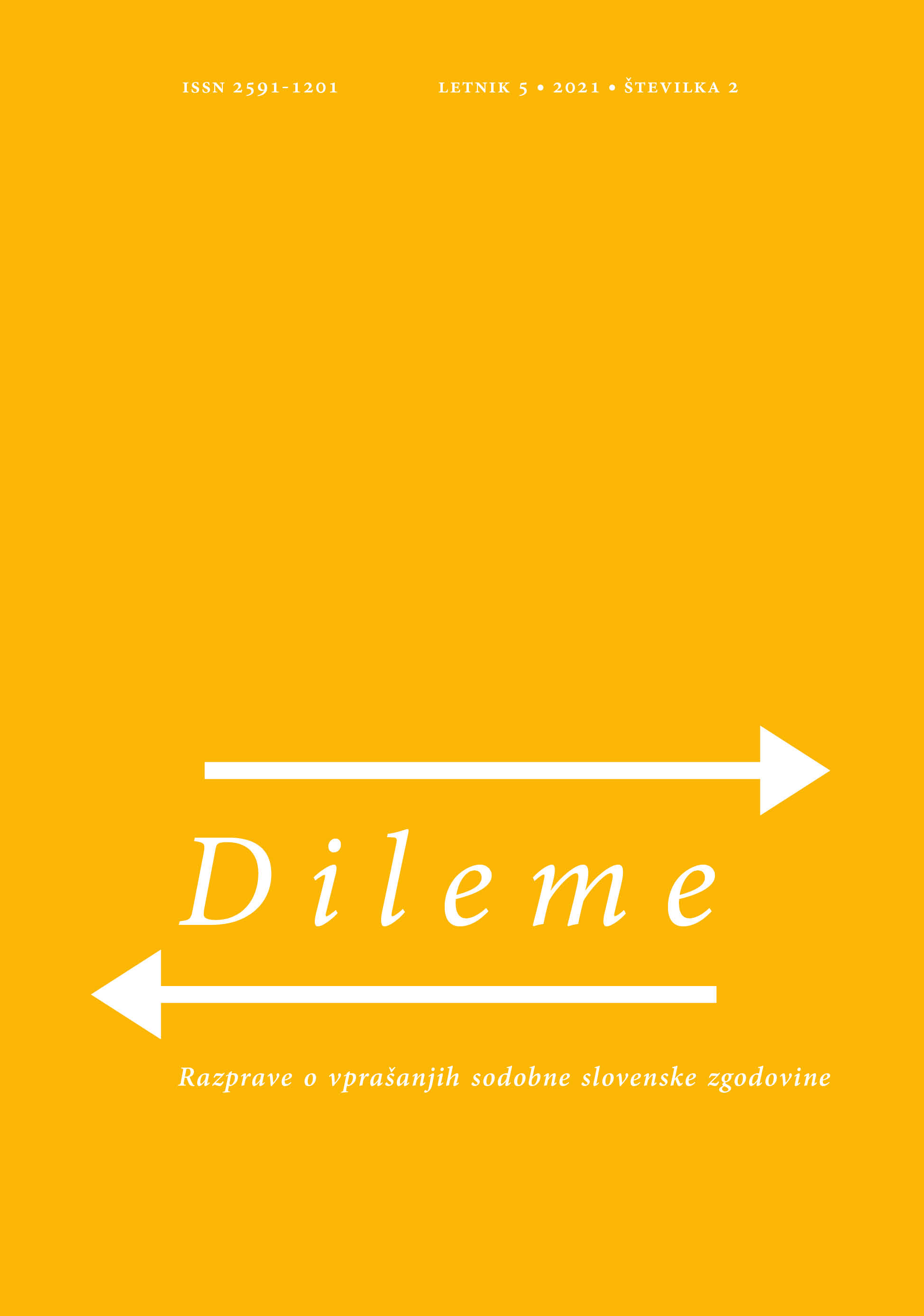
Keywords: Renzo De Felice; Italian fascism; Benito Mussolini; historiography; historical controversies;
The paper presents the Italian historian Renzo De Felice and his historiographical treatment of Italian fascism. In Italy, his research in the 1970s marked a turning point in the historical consensus on the subject up to that time. Hence, his work has been accompanied by several polemics that have often left the framework of scientific debate. In the first part of the paper, De Felice’s claims are confronted with his critics’ reproaches, while in the second part the article endeavours to explain the background of the polemic, presenting the specific socio-cultural situation in the Italy of that time and its impact on historiography on the fascist period. The discussion concludes that De Felice’s work, despite some contentious points, is currently considered as indispensable for all modern researchers of this period of Italian history.
More...Keywords: İdentity; Other; Subaltern; Migration; Fatih Akın;
Identity has a wide range of concepts, from the product identity of the companies to the post-colonial identity, from personal identities to ethnic, religious, sexual, and social identities. Especially in the modern age, the identity problem is not only decisive at the level of national identity but also at the level of different identities in cultural life. Therefore, the definition of identity and the discussions about identity have always been the focus of cinema. In this article, concepts such as identity, the other, and the subaltern are first defined to discuss identity in cinema. Later, I tried to analyze the discussions about these concepts based on Akın's films. Akın, in his films, explained different identities in the social-political world; groups with cultural, religious, linguistic, and racial differences can live together peacefully if desired. It is also shown that people living together can respect all kinds of identities and that it is not a problem for a person to have more than one identity. In this respect, films such as Short and Painless (1998), In July (2000), Solino (2002), Against the Wall (2004), On the Edge of Life (2007), The Cut (2014), and Shattered (2017); The concepts such as migration, identity, the other, and cultural change were analyzed with the "sociological method" and "discourse analysis" methods. Thus, the theoretical definitions of identity were tried to be embodied in Akın's films.
More...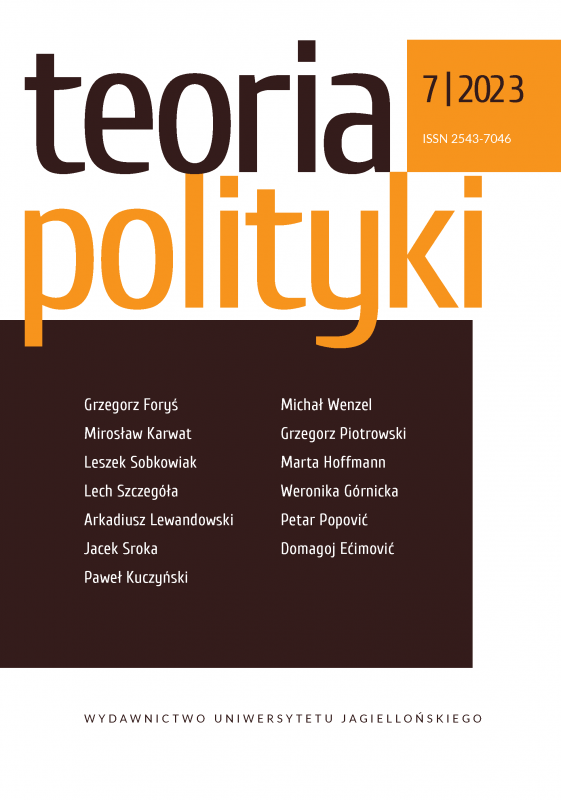
Keywords: deliberation; participation; systemic position of the actor; components of consideration; deliberative empowered democracy
The aim of the article is to formulate the conclusions extending the Bobbio’s proposal and relating to such configurations of the systemic positioning of actors that are conducive to shaping the system of decision components able to the creation and consolidation of pro-deliberative binding patterns of behaviors in public policy. Their creation and conservation would most effectively approximate the consensus driven variant of democracy. At the same time, they would dismiss the threats of non-consensual democracy and also those weakened by agreement – e.g. by the bypassing the formal institutions through informal, but well established one. The model proposal contained in the text will fit into the implementation-oriented formula of the so-called mid-range theories, which are associated with the analysis of problems closer to the practical aspects of public policies, although without disregarding the studies on determinants typical for the broader context of politics.
More...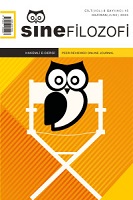
Keywords: Kaptan Fantastic (2016); Capitalism; Neoliberalism; Sovereign Ideology; Social Institutions;
All the structural changes that capitalism has caused in the historical process have brought about economic and cultural changes in social life and therefore in social institutions. The family, religion and education institutions, which are among the structures that have undergone changes with capitalism, are important because of their ideological functions at the point of approval of the current system. Today, neoliberalism is seen as a necessity, even a completely natural way to ensure social order in many parts of the world, and it is underlined that no other alternative order is possible. Social institutions and structures are transforming in a way that reinforces this belief. In this context this study examines the movie Captain Fantastic (2016), which is about the life of a family that resists the existing capitalist system and the institutions affected by capitalism, with the lifestyle they have established. The aim of this study is to reveal the discourse of the film within the framework of the question of how possible to live an alternative life completely outside of the institutional structures shaped by capitalism. For this purpose, by using the descriptive analysis method, the compromises and contrasts between the capital system and the family in the movie were tried to be revealed.
More...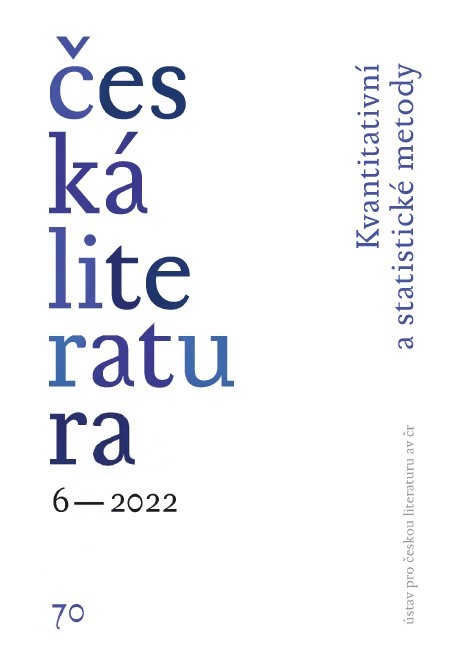
Keywords: reviews;
This paper contains following book reviews: 1. Plecháč, Petr. Versification and authorship attribution. First edition. Prague: Institute of Czech Literature, 2021. 97 stran. Czech literature studies. ISBN 978-80-7658-027-5. 2. Hartmanová, Pavla. Digitální literatura sociálních médií. 1. vydání. Olomouc: Univerzita Palackého v Olomouci, Filozofická fakulta, 2021. 228 stran. Litera libera; sv. č. 10. ISBN 978-80-88278-72-6. 3. Hall, Murray G. Der Volk und Reich Verlag, Prag: zur Geschichte des Buchhandels und Verlagswesens im Protektorat Böhmen und Mähren 1939-1945. Wien: Praesens Verlag, [2021], ©2021. 358 stran. ISBN 978-3-7069-1131-3. 4. Kozák, Jan A. Monomýtus: syntetické pojednání o teorii mýtu. Vydání první. [Praha]: Malvern, 2021. 311 stran. ISBN 978-80-7530-360-8. 5. Klossowski, Pierre. Nietzsche a bludný kruh. Překlad Ladislav Nagy a Martin Pokorný. První české vydání. Praha: Univerzita Karlova, nakladatelství Karolinum, 2021. 247 stran. Limes. ISBN 978-80-246-4756-2.
More...